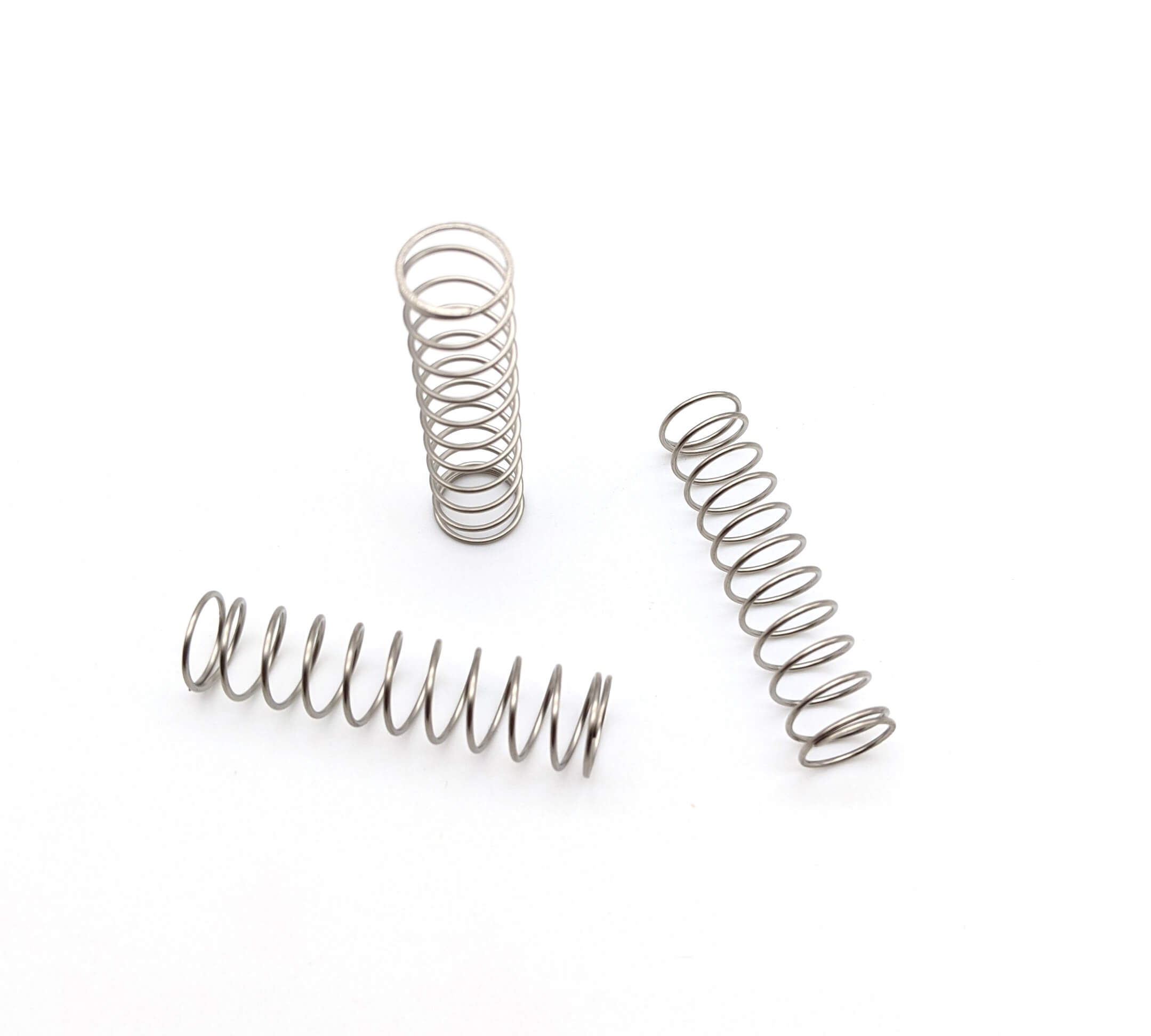Get unique, complex parts easily. No matter your requirements, Chaoyi Spring creates hard-to-produce coil springs and wire forms.
Let us help you create the custom wire form you need, from S-hooks and J-hooks to utility hooks and more.
We work closely with customers across a wide range of industries, helping them design and manufacture made-to-order parts.
Why choose Chaoyi Spring? We prioritize customer-focused collaboration, modern equipment and the latest technology to make your parts per print.
Find the information and guidance you need, from measuring a spring to learning about materials, placing an order and much more.
Hlical compression springs, often referred to as helical springs, are ubiquitous components in numerous mechanical systems, playing a crucial role in providing force, supporting loads, and absorbing energy. Their simple


Hlical compression springs, often referred to as helical springs, are ubiquitous components in numerous mechanical systems, playing a crucial role in providing force, supporting loads, and absorbing energy. Their simple yet robust design, characterized by a coiled wire, allows them to offer a wide range of functionalities, making them indispensable in various industries. This article delves into the intricacies of hlical compression springs, exploring their design principles, common applications, and the critical factors that contribute to their performance and longevity. We will unravel the complexities of spring rate, material selection, and manufacturing processes, ultimately providing a comprehensive understanding of these essential mechanical elements.

Hlical compression springs, in their simplest form, are coiled wires that exhibit elastic properties, allowing them to deform under applied force and return to their original shape when the force is removed. This elastic behavior is the cornerstone of their functionality, enabling them to store and release mechanical energy. The spring's ability to resist deformation is quantified by its spring rate, a parameter that reflects the force required to compress the spring by a specific distance. A higher spring rate implies a stiffer spring, requiring greater force for compression.
The design of a hlical compression spring involves several key considerations, including the wire diameter, coil diameter, number of coils, and material properties. These parameters significantly influence the spring's characteristics, such as its spring rate, load capacity, and resilience. The wire diameter determines the spring's strength and load-bearing capacity, while the coil diameter affects its flexibility and space requirements. The number of coils dictates the spring's overall length and its ability to store energy. The choice of material is crucial, as it affects the spring's resilience, fatigue life, and resistance to corrosion.
Hlical compression springs find widespread use across various industries, performing critical roles in diverse mechanical systems. Their ability to store and release energy, provide restoring force, and support loads makes them indispensable in numerous applications. Here are some notable examples:
The wide range of applications underscores the versatility and importance of hlical compression springs in modern technology.
The performance and longevity of a hlical compression spring depend heavily on several critical factors. Material selection plays a pivotal role, as different materials possess varying properties, influencing the spring's strength, resilience, and fatigue life. Commonly used materials for compression springs include steel alloys, stainless steel, and non-ferrous metals like copper and brass.
Manufacturing processes also exert a significant influence on the spring's performance. Precision manufacturing techniques, such as cold coiling and shot peening, ensure dimensional accuracy, surface finish, and enhanced fatigue life. The manufacturing process can introduce residual stresses, which can impact the spring's behavior and lifespan.
Environmental factors can also affect a hlical compression spring's performance. Exposure to extreme temperatures, corrosive environments, and abrasive materials can degrade the spring's properties and shorten its lifespan. Proper material selection, surface coatings, and environmental protection measures are essential to ensure optimal performance in demanding conditions.
When selecting a hlical compression spring for a particular application, several crucial factors must be taken into consideration to ensure optimal performance and longevity:
By carefully considering these factors, engineers can ensure that the selected compression spring meets the specific requirements of the application and provides reliable performance over its intended lifespan.
The manufacturing of hlical compression springs is a precision process involving specialized machinery and meticulous quality control measures. Here's a brief overview of the key steps involved:
Precision manufacturing and rigorous quality control are crucial for producing hlical compression springs that meet the demanding requirements of various applications.
Hlical compression springs are ubiquitous components in countless mechanical systems, playing a critical role in providing force, supporting loads, and absorbing energy. Their simple yet robust design, combined with their versatility and reliability, makes them indispensable in various industries. Whether in automobiles, industrial machinery, consumer products, electronics, or aerospace applications, hlical compression springs contribute significantly to the smooth operation and performance of modern technology.
Understanding the design principles, applications, and critical factors influencing their performance is essential for engineers and designers to select and implement these springs effectively. By considering factors such as spring rate, load capacity, space requirements, environmental conditions, and fatigue life, engineers can ensure that hlical compression springs meet the specific needs of their applications, contributing to the reliability and efficiency of countless mechanical systems.
In conclusion, hlical compression springs are fundamental elements in numerous mechanical systems, contributing to the functionality, performance, and reliability of countless applications. Understanding their design principles, applications, and critical factors influencing their performance is paramount for engineers and designers. By selecting and implementing these springs effectively, we can ensure the smooth operation and longevity of countless mechanical systems, contributing to the advancement of technology and innovation across various industries.
Browse some of the custom wire forms and springs that we manufacture. Don’t see what you need? We specialize in made-to-order products that meet your application requirements.
Visit Our GalleryNeed a custom wire form or coil spring? We make it work. Fill out the contact form and a representative will respond within 1 business day. If you have a PDF or CAD file, you can submit to request a quote.